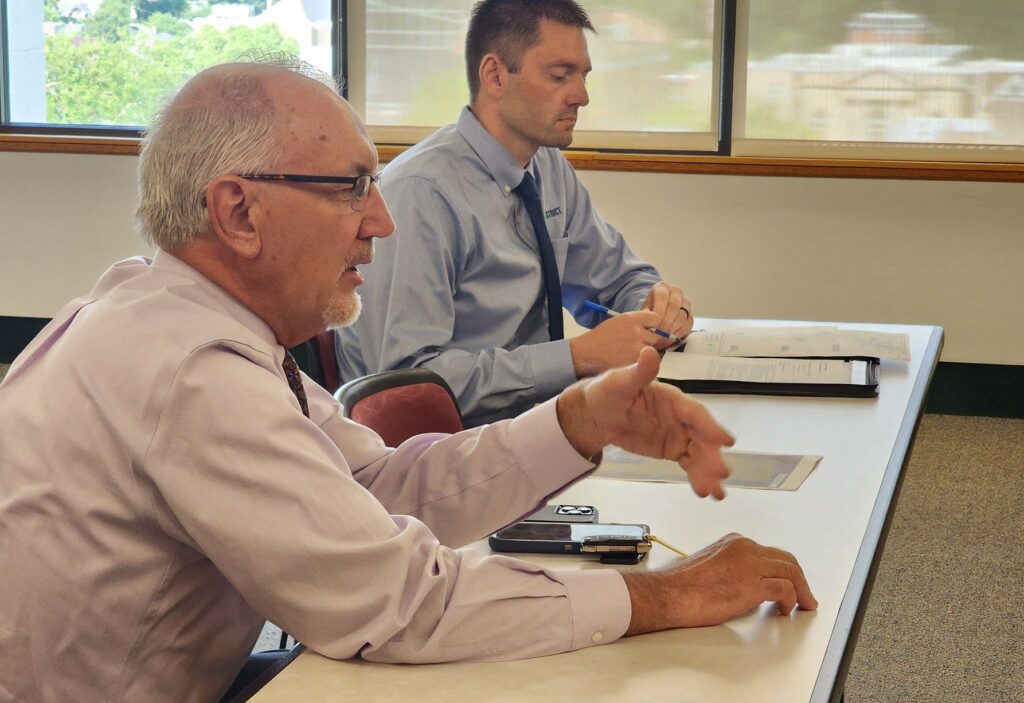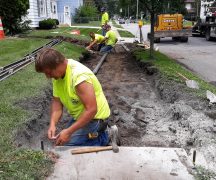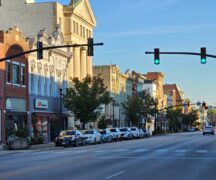By JAN McLAUGHLIN
BG Independent News
All across Wood County, water lines are being checked to make sure no lead is lingering below the surface.
Using $1 million in American Rescue Plan Act funds, the Northwestern Water and Sewer District is working to identify lead water lines remaining in Wood County.
As proven by the water crisis in Flint, Michigan, the health risks of lead in water can be significant and long-lasting, especially to young children.
The U.S. EPA has mandated all municipal water treatment providers to evaluate their distribution and delivery systems to ensure that any lead lines be identified by this October.
So far, the contractor working on the project in Wood County has checked 1,379 water service lines – finding 53 containing lead, said Garret Chamberlain, assistant engineer with NWWSD.
According to Chamberlain, lead pipes started showing up in water lines after World War II, due to the shortage of steel in the U.S.
Because identifying possible lead lines can be a costly task for entities with aging systems, the Wood County Commissioners in 2022 offered $1 million to implement a countywide lead service identification program – and the Northwestern Water and Sewer District accepted the challenge.
And on Thursday, district officials presented a progress report to the county commissioners on the water service line project.

“It would have been difficult for some communities to pull this together,” said NWWSD Executive Director Jerry Greiner.
So far it appears that the entire $1 million in ARPA funds will not be needed to identify the service water line materials in the county. But Chamberlain said the remaining could possibly be used to replace any lead lines discovered in the process.
The district hired a contractor to expose the unidentified service lines through a low impact, vacuum excavation process and to log the information for all the systems.
Some communities had already identified the material used in the lines leading into homes. For those still unknown, the NWWSD program is using the excavation process, which creates a 8-12-inch hole down to the service line.
Five communities that operate their own water systems signed up for the NWWSD program – Perrysburg, Tontogany, North Baltimore, Bradner and Fostoria. Work has been completed in Tontogany, Bradner and Fostoria, is underway in Perrysburg, and will begin soon in North Baltimore, Chamberlain said.
Like all communities in Ohio, Bowling Green is under orders to make sure its water isn’t flowing through lead lines on the way to its customers’ faucets.
The city has been working on its water service line inventories for a couple years now. Since 1986, lead has been banned for use in water lines, and in the 1990s any known lead service lines in Bowling Green were replaced.
There are two parts of water lines to be identified and mapped – the utility side and the customer side. The NWWSD is excavating each side of customers’ curb boxes to identify the materials of the water lines.
Bowling Green is in a different position.
First, Bowling Green has already identified all of the service lines on the utility side, and there are no lead lines in the city system.
And second, to identify the materials on the customer side, the city has decided to work with residents to enter the homes and look at the materials at the water meter. It was decided this would be less invasive and less expensive than excavating.
Bowling Green has received a $50,000 EPA grant to help with the waterline material inspections.




